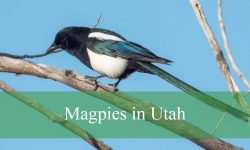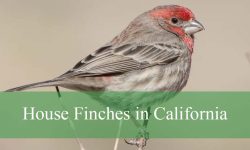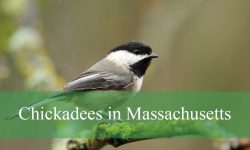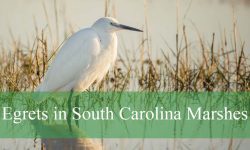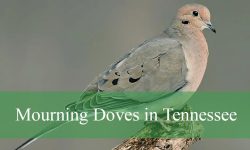California hosts several fascinating vulture species that play a crucial role in maintaining a healthy ecosystem. These scavengers feed on carrion, helping to clean the environment and reduce the spread of disease. Despite their often misunderstood reputation, vultures are essential to nature’s balance.
This article introduces the three types of vultures found in California: the Turkey Vulture, the California Condor, and the Black Vulture. Each species has distinct features, behaviors, and habitats that make them unique and worth knowing.
Bird enthusiasts and nature lovers alike will find this guide helpful for identifying these impressive birds and appreciating their importance in California’s wildlife.
Common Vultures Found in California
Turkey Vulture (Cathartes aura)
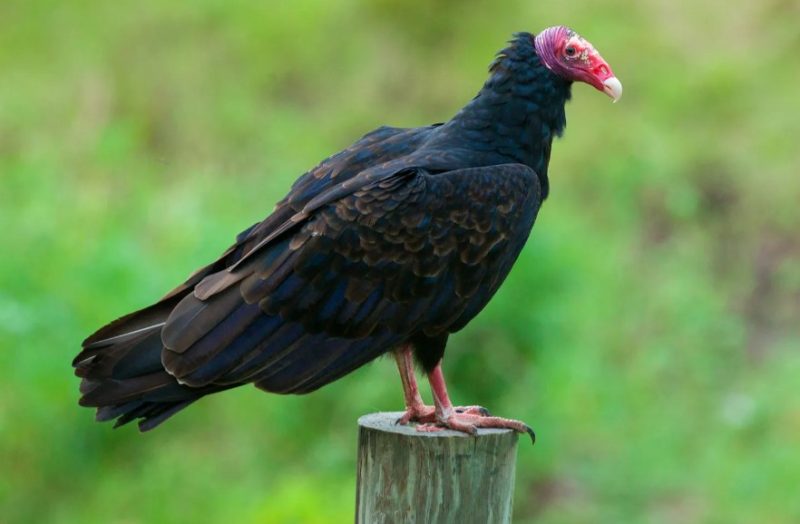
The Turkey Vulture is the most widespread and commonly seen vulture species throughout California. It is a medium to large bird, with a wingspan ranging from approximately 5.5 to 6 feet (about 1.7 to 1.8 meters) and weighing between 2 and 5 pounds (0.9 to 2.3 kilograms). The bird’s plumage is predominantly dark brown to black, but its most striking feature is its bright red, featherless head that resembles the head of a wild turkey, giving this species its name. When observed in flight, the Turkey Vulture displays a distinctive two-tone pattern on the underside of its wings—dark near the body with silvery-gray flight feathers along the edges, making it relatively easy to identify even from a distance.
Turkey Vultures are highly specialized scavengers, relying almost exclusively on carrion for food. Unlike many birds of prey that hunt live animals, Turkey Vultures locate food primarily through their remarkable sense of smell, an uncommon trait among birds. They can detect ethyl mercaptan, a gas produced by decaying flesh, from great distances. These vultures soar effortlessly in broad circles on thermal air currents, often seen gliding low over highways, open fields, or deserts. Their soaring flight uses minimal wing flapping, conserving energy as they search vast areas for carcasses. Turkey Vultures are social and often roost communally in trees or on cliffs, sometimes in groups numbering in the hundreds.
In California, Turkey Vultures are extremely adaptable, inhabiting a wide range of environments from coastal regions and deserts to grasslands and open woodlands. They avoid dense forested areas but are common in both rural and urban settings, often seen perched on fence posts, power lines, or even road signs. Their ability to thrive near human activity is partly due to their opportunistic feeding habits and lack of fear of people.
Fun Fact: Turkey Vultures have a unique defense mechanism—they can vomit a foul-smelling, corrosive liquid to deter predators or competitors. This vomit is not only unpleasant but also lightens the bird’s body weight, helping it take flight more quickly in emergencies. This adaptation highlights their incredible evolutionary niche as nature’s clean-up crew.
California Condor (Gymnogyps californianus)
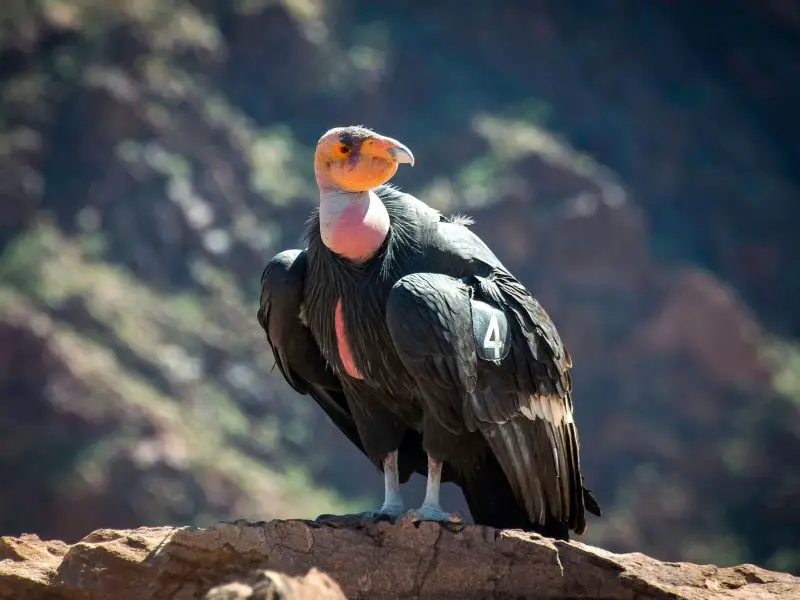
The California Condor is a true giant among North American birds and holds the title of the largest land bird on the continent. Adult condors boast an enormous wingspan that can reach up to 9.5 feet (2.9 meters) and weigh between 15 and 31 pounds (7 to 14 kilograms), making their soaring silhouette unmistakable against the sky. Their plumage is mostly black with striking white patches visible on the underside of their broad wings. Their heads are featherless and show a color range from bright orange to pinkish hues depending on the bird’s age and emotional state. Compared to Turkey Vultures, California Condors have a heavier and more robust body, larger beak, and broader wings, adaptations for soaring at high altitudes and covering long distances.
The California Condor’s history is one of near extinction and remarkable recovery. By the 1980s, the wild population had dwindled to fewer than 30 individuals, leading to a controversial but successful captive breeding program that brought the species back from the brink. Today, thanks to these conservation efforts, wild populations have been reintroduced primarily in remote parts of Southern California, such as the Los Padres National Forest and surrounding wilderness areas, as well as parts of Arizona and Utah. However, their numbers remain critically low, and they are closely monitored to ensure survival.
California Condors are scavengers specializing in large carcasses, such as deer, elk, and livestock. They utilize thermal updrafts to glide gracefully across vast territories, sometimes traveling over 150 miles (240 kilometers) in a single day in search of food. These birds exhibit strong social behaviors, including communal roosting and complex interactions at feeding sites. Despite their size and power, condors rely entirely on carrion and play a vital role in their ecosystems by cleaning up dead animals and preventing the spread of disease.
Fun Fact: California Condors have an exceptional lifespan and can live more than 60 years in the wild. However, they reproduce very slowly—females lay just one egg every two years, and chicks take months to fledge. This slow reproduction rate means that conservation efforts must be long-term and sustained to secure the species’ future.
Black Vulture (Coragyps atratus)
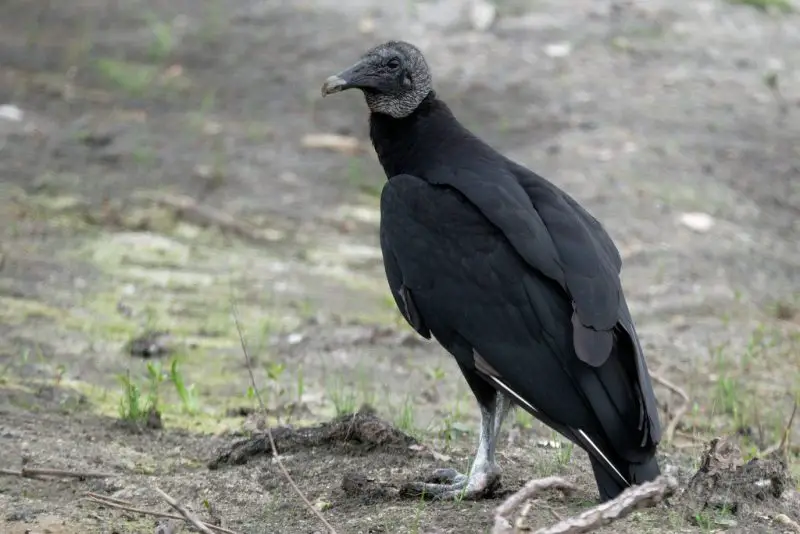
Black Vultures are slightly smaller but stockier than Turkey Vultures, with a wingspan between 4.5 and 5 feet (1.4 to 1.5 meters) and an average weight of 3 to 5 pounds (1.4 to 2.3 kilograms). Their plumage is entirely black, and unlike Turkey Vultures, their heads are a darker gray to black with a rough texture. One major difference is that Black Vultures have a poor sense of smell and cannot locate carrion by scent; instead, they rely heavily on keen eyesight and often follow Turkey Vultures or other scavengers to food sources. When flying, they exhibit a distinctive pattern of rapid wing flapping interspersed with short glides, contrasting with the Turkey Vulture’s smoother, more effortless soaring.
Historically, Black Vultures were mostly restricted to the southeastern United States, Central America, and parts of South America. However, in recent decades, their range has been expanding westward and northward, with more frequent sightings now reported in Southern California. This expansion is attributed to the species’ adaptability to human-altered landscapes and its opportunistic feeding habits. In California, Black Vultures tend to inhabit open or semi-open environments including deserts, grasslands, agricultural fields, and even urban areas near landfills or roadways.
Behaviorally, Black Vultures are more aggressive and territorial than Turkey Vultures, often dominating feeding sites through intimidation or direct competition. They are social birds that roost and forage in groups, frequently seen perched together on power lines or rooftops. Interestingly, Black Vultures sometimes supplement their diet by preying on small live animals such as newborn livestock, eggs, or even weakened birds, a rare trait among vultures that are usually strict scavengers.
Fun Fact: Unlike most vultures, Black Vultures have been observed hunting live prey, including small mammals and birds. This opportunistic behavior demonstrates their adaptability and can sometimes bring them into conflict with farmers.
FAQs About Vultures in California
What vultures can be found in California?
California is home mainly to two resident vultures: the Turkey Vulture and the California Condor. The Black Vulture has recently started appearing in Southern California as a rare visitor expanding its range.
How can I tell the difference between a Turkey Vulture and a California Condor?
Turkey Vultures have a smaller wingspan (~6 feet), dark brown to black feathers, and a bright red, bald head. California Condors are much larger, with a wingspan up to 9.5 feet, black plumage with white patches under the wings, and an orange-pink bald head.
Are California Condors endangered?
Yes. California Condors are critically endangered. Thanks to captive breeding and reintroduction programs, their numbers have increased but they remain rare and protected.
Do vultures eat live animals or just carrion?
Most vultures, including Turkey Vultures and California Condors, are strict scavengers feeding only on dead animals. However, Black Vultures sometimes hunt small live prey like newborn livestock or eggs.
Where do Turkey Vultures prefer to live in California?
Turkey Vultures are highly adaptable and live in many habitats including deserts, grasslands, coastal areas, and near human settlements, as long as there are open spaces for soaring and food availability.
How do vultures find their food?
Turkey Vultures have a keen sense of smell to locate decaying animals, which is rare among birds. California Condors and Black Vultures rely mostly on sharp eyesight and often follow other scavengers.
Can I see California Condors in the wild?
Yes, but sightings are mostly limited to specific protected areas in Southern California and nearby states. Condors are monitored closely by wildlife authorities due to their endangered status.
What is the wingspan of Black Vultures?
Black Vultures have a wingspan of about 4.5 to 5 feet, smaller than Turkey Vultures and much smaller than California Condors.
Why are vultures important to the ecosystem?
Vultures play a crucial role by cleaning up dead animal carcasses, preventing the spread of diseases, and recycling nutrients back into the ecosystem.
Are vultures aggressive birds?
Black Vultures tend to be more aggressive at feeding sites, sometimes displacing other scavengers. Turkey Vultures are generally less aggressive and more passive.


